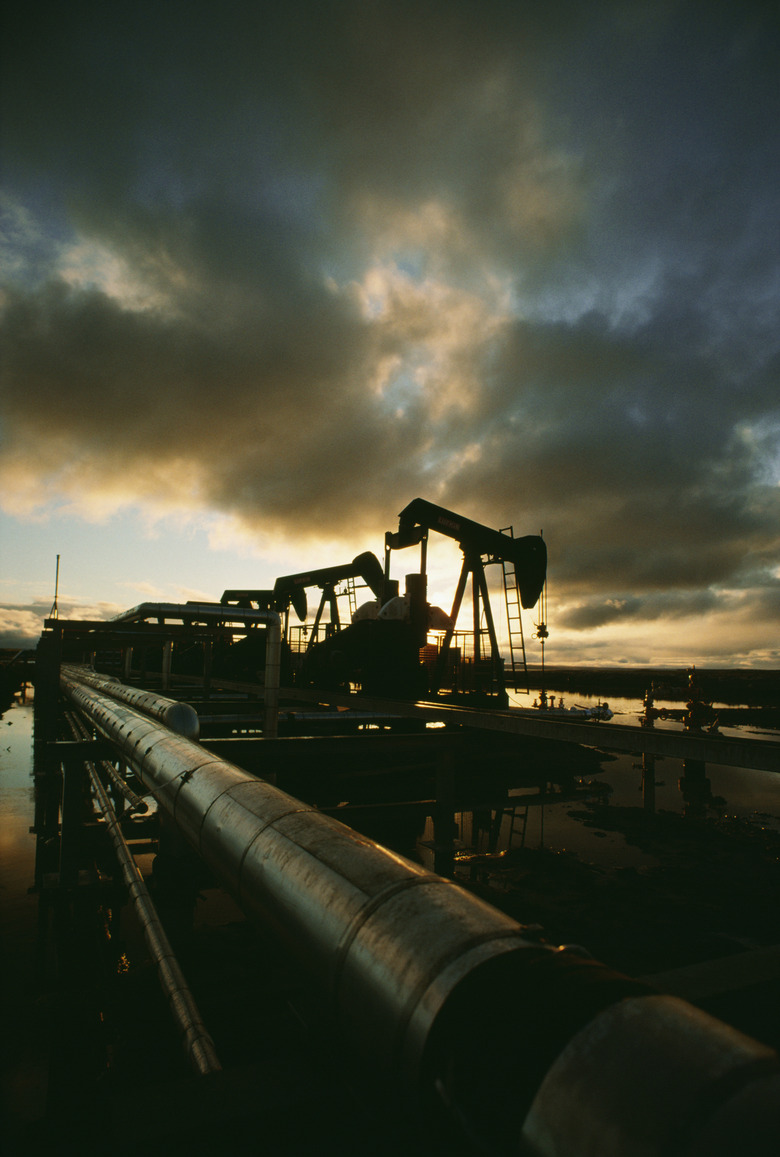How To Calculate Heat Loss During Pipeline Depressurization
When a pressurized gas pipeline is rapidly depressurized (i.e., the gas is allowed to flow rapidly through an open valve to atmosphere), a thermodynamic effect causes the gas to cool. This is called a throttling process or the Joule-Thomson effect. The loss of heat is a function of the expansion of the gas from a high pressure to a lower pressure and is adiabatic in nature (no heat is exchanged).
Step 1
Determine the gas that is compressed in the pipeline. For instance, assume that carbon dioxide gas is in a pipeline at a pressure of 294 pounds per square inch (psi) and a temperature of 212 degrees Fahrenheit. At these conditions, the Joule-Thomson coefficient is 0.6375.
Step 2
Rearrange the heat loss calculation to isolate the final temperature. The Joule-Thomson equation is μ = (T1 – T2) / (P1 – P2) where μ is the Joule-Thomson coefficient, T1 is the initial temperature, T2 is the final temperature, P1 is the initial pressure and P2 is the final pressure. Rearranging yields -μ x (P1 – P2) + T1 = T2. Assume the final pressure is 50 psi.
Step 3
Calculate the final temperature and heat loss in the system. This is done by plugging in the values as -0.6375 x (294 – 50) + 212 = T2 which calculates to be T2 = 56.45. Therefore, the heat loss during depressurization is 212 – 56.45 or approximately 155 degrees Fahrenheit.
Things Needed
- Pen
- Paper
- Calculator
References
- McMaster Carr: Chemistry Calculations
- "Perry's Chemical Engineer's Handbook"; Joule-Thomson Effect; Robert Perry; 1984
Cite This Article
MLA
Baer, Brian. "How To Calculate Heat Loss During Pipeline Depressurization" sciencing.com, https://www.sciencing.com/calculate-heat-loss-during-pipeline-depressurization-11383637/. 24 April 2017.
APA
Baer, Brian. (2017, April 24). How To Calculate Heat Loss During Pipeline Depressurization. sciencing.com. Retrieved from https://www.sciencing.com/calculate-heat-loss-during-pipeline-depressurization-11383637/
Chicago
Baer, Brian. How To Calculate Heat Loss During Pipeline Depressurization last modified March 24, 2022. https://www.sciencing.com/calculate-heat-loss-during-pipeline-depressurization-11383637/
